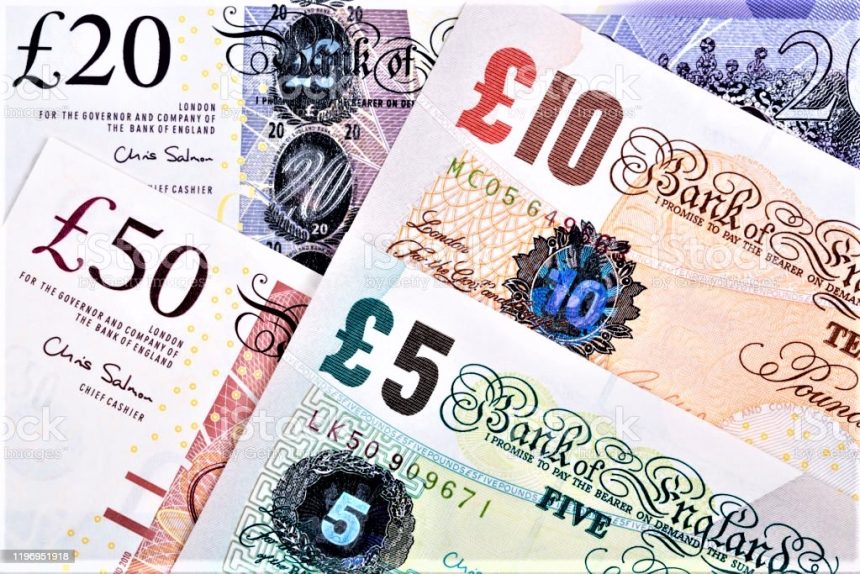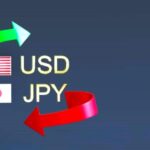Pound Recovers Against the US Dollar Amid Russia-Ukraine Peace Hopes and Tariff Concerns.
The British Pound (GBP) is gaining momentum against the US Dollar (USD) after experiencing a two-day correction, rebounding near the 1.2610 level during European trading hours on Monday. The recovery in the GBPUSD pair largely attributed to optimism surrounding a potential peace truce between Russia and Ukraine, which has reduced the safe-haven appeal of the US Dollar. Meanwhile, looming tariff threats from US President Donald Trump on Canada, Mexico, and China are creating uncertainty in the markets, adding further complexity to the global economic landscape.
In this analysis, we will explore the key factors driving the GBPUSD exchange rate, including geopolitical developments, monetary policy outlooks, and upcoming economic data that could influence market sentiment in the coming days.
Pound Gains as Geopolitical Tensions Ease
One of the primary reasons behind the Pound Sterling’s recent strength is growing optimism over a possible peace agreement between Russia and Ukraine. Over the weekend, UK Prime Minister Keir Starmer met with European leaders and Ukrainian President Volodymyr Zelenskyy to discuss a unified peace proposal. This plan expected to be presented to Washington, signaling a potential turning point in the three-year-long conflict that has significantly impacted global markets.
Since the onset of the war, the US Dollar has acted as a safe-haven asset, attracting investors during periods of heightened geopolitical uncertainty. Now, with signs of possible de-escalation, the Greenback is losing some of its strength. The US Dollar Index (DXY), which measures the USD’s performance against six major currencies, fell to 107.25 after reaching a two-week high of 107.65 on Friday.
If peace negotiations continue to progress positively, we could see further declines in USD demand, providing more support for the British Pound in the short to medium term.
The Impact of Trump’s Tariff Plans on Market Sentiment
While geopolitical stability is a key factor influencing the forex markets, concerns over US trade policy are also shaping investor sentiment. US President Donald Trump has reaffirmed his intentions to impose tariffs on Canada, Mexico, and China, citing their failure to restrict the flow of fentanyl into the United States.
Key Tariff Announcements:
Tuesday: Trump is set to announce tariffs on Canada and Mexico, with US Commerce Secretary Howard Lutnick confirming that negotiations over tariff rates are still possible.
Canada & Mexico: A potential 25% tariff could be imposed, impacting trade relations with two of the United States’ largest partners.
China: An additional 10% tariff has been imposed, following a previous 10% tariff in early February.
If Trump moves forward with aggressive trade policies, this could lead to global trade disruptions, further strengthening the US Dollar as a safe-haven asset. However, the impact on the GBP/USD pair will depend on how the UK navigates its own trade agreements with the US.
Bank of England’s Cautious Approach to Rate Cuts
Beyond geopolitical and trade developments, monetary policy expectations continue to play a significant role in shaping the GBPUSD exchange rate. On Friday, Bank of England (BoE) Deputy Governor Dave Ramsden reinforced expectations that the central bank will adopt a “careful and gradual” approach to monetary easing.
Key Insights from Ramsden’s Speech:
The BoE remains cautious about inflationary pressures, which continue to linger due to persistent wage growth.
Ramsden no longer believes that risks to meeting the 2% inflation target are skewed to the downside, suggesting a slower-than-expected rate-cut cycle.
Markets have fully priced in two interest rate cuts for the year, but the timing of these cuts remains uncertain.
A gradual approach to easing by the BoE could support the Pound against the US Dollar, especially if the Federal Reserve (Fed) proceeds with rate cuts at a faster pace.
US Federal Reserve Policy and Economic Data Outlook
Investors are also closely monitoring the US economic outlook, as it will determine the Federal Reserve’s next moves on interest rates. While the Fed is expected to hold rates steady in March and May, market participants are pricing in a 77% probability of a rate cut in June, according to the CME FedWatch Tool.
Key Economic Events This Week:
- (a) US Nonfarm Payrolls (NFP) – Friday, March 8
The February NFP report will be a crucial factor in determining the Fed’s monetary policy path.
A strong jobs report could delay expectations for a Fed rate cut, boosting the US Dollar.
A weaker-than-expected report could reinforce expectations of June rate cuts, supporting risk assets like the Pound.
- (b) US ISM & S&P Global Manufacturing PMI – Monday, March 4
The ISM Manufacturing PMI expected to decline slightly to 50.8 from 50.9 in January.
If data surprises to the downside, it could strengthen rate-cut expectations, weighing on the USD.
Overall, US economic data this week will be pivotal in shaping expectations for both the Federal Reserve and the BoE, influencing GBPUSD movement.
UK-US Trade Deal Hopes Could Provide GBP Support
Another potential tailwind for the Pound Sterling is optimism surrounding a UK-US trade deal. Last week, Keir Starmer met with Donald Trump, but negotiations did not conclude with a formal agreement. However, Trump remained optimistic, stating that a deal could be reach “pretty quickly” and that tariffs “wouldn’t be necessary” if both sides reach a fair agreement.
If positive trade negotiations continue between the US and the UK, it could boost investor confidence in the British economy, further supporting the Pound against the US Dollar.
Pound Technical Outlook: What’s Next?
From a technical perspective, GBPUSD is rebounding after testing support levels near 1.2550 last week. The key resistance levels to watch include:
1.2615 (Immediate resistance)
1.2650 (Stronger resistance)
1.2700 (Major resistance, potential breakout point)
If the Pound continues to gain momentum, a break above 1.2700 could open the door for further gains toward 1.2800. On the downside, key support levels include:
1.2550 (Immediate support)
1.2500 (Psychological level, major support)
The direction of GBPUSD in the short term will largely depend on developments in Russia-Ukraine peace talks, US tariff decisions, and key economic data releases this week.
Conclusion: What to Expect for Pound?
The British Pound has made a strong comeback against the US Dollar, supported by optimism over a potential Russia-Ukraine peace agreement, expectations of a gradual BoE rate-cut cycle, and hopes for a positive UK-US trade deal.
However, risks remain due to Trump’s tariff threats and upcoming US economic data, which could influence Fed rate expectations. As a result, traders should remain cautious, keeping an eye on key technical levels and market-moving events this week.
Going forward, if geopolitical tensions continue to ease, and UK-US trade negotiations progress positively, we could see further Pound upside potential in the coming weeks. However, uncertainty surrounding US tariff policies and the NFP report could create volatility in the near term.









